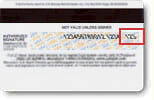Penalty Interest
Condition 4 of Table A, Schedule 7 of the Transfer of Land Act provides for the payment of penalty interest if either party delays the payment of money. The most common form of delay is the postponement of settlement.
When Is Penalty Interest Payable?
Penalty interest is payable when money is due, but is not paid by the due date. This means that late payment of deposit or late payment of the balance of the purchase price at settlement will usually give rise to an obligation to pay penalty interest.
Who Has To Pay Penalty Interest
Condition 4 refers to default by “either party” in the payment of money. Effectively, this means that the vendor is the only one who can charge penalty interest, simply because it is the purchaser who is obliged to pay money in any sale. Even if the vendor delays settlement, and the purchaser suffers loss as a result, penalty interest is not payable (although there may be other remedies available to the purchaser).
How Is Penalty Interest Calculated?
Penalty interest is calculated on the balance of the funds due, including any adjustments. The rate is set under the Penalty Interest Rates Act, and is subject to variation. The current penalty interest rate is published in a number of places, including the Law Institute Journal, the website of the Law Institute of Victoria, and The Age newspaper (each Monday). Most Contracts provide for the payment of penalty interest at a rate that is 2% above the penalty interest rate, and some provide for higher amounts.
What If The Delay Is No-one’s Fault?
Unfortunately, it is always someone’s fault! Or to put it another way, if the delay occurs on your side of the transaction, it is your delay. For example, if your bank makes a mistake in preparing the cheques and this causes a delay, you are the defaulting party, and must pay the penalty interest. Sometimes the bank will compensate you, but often they won’t.

